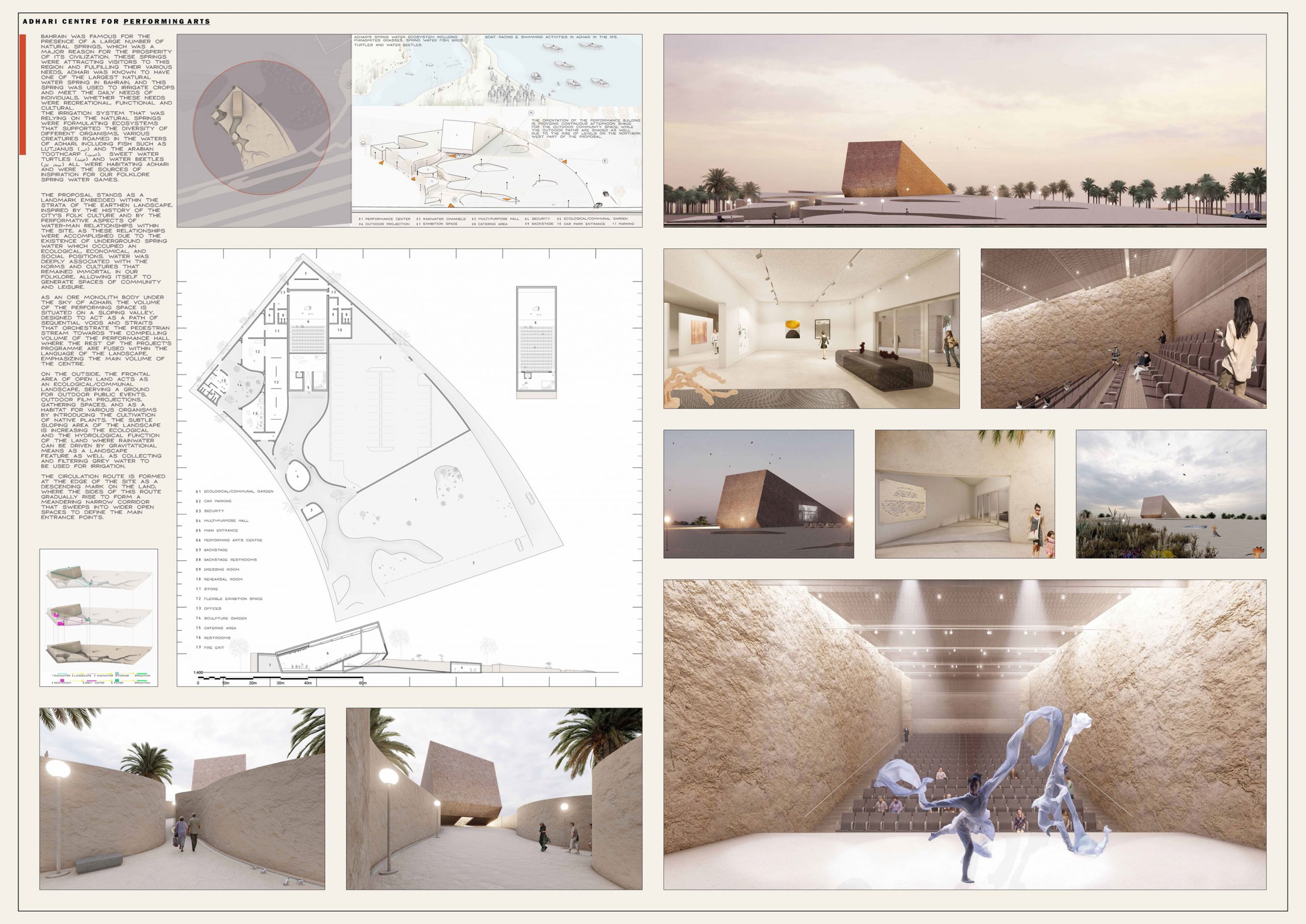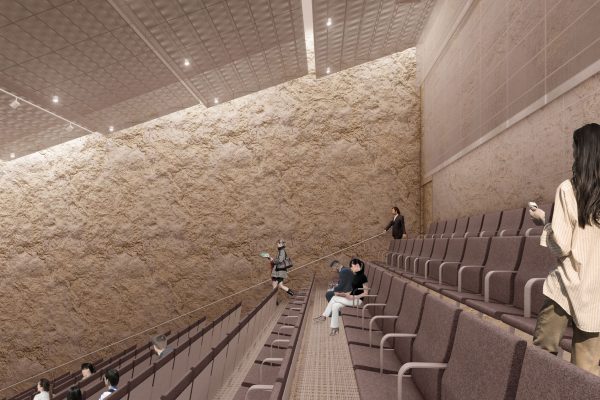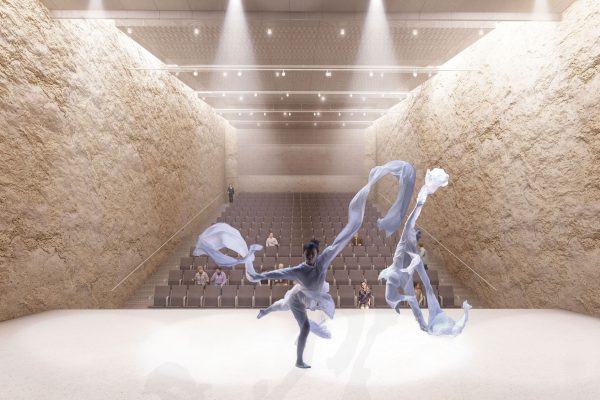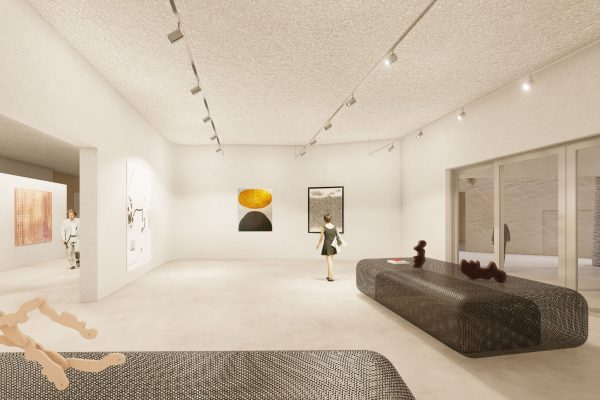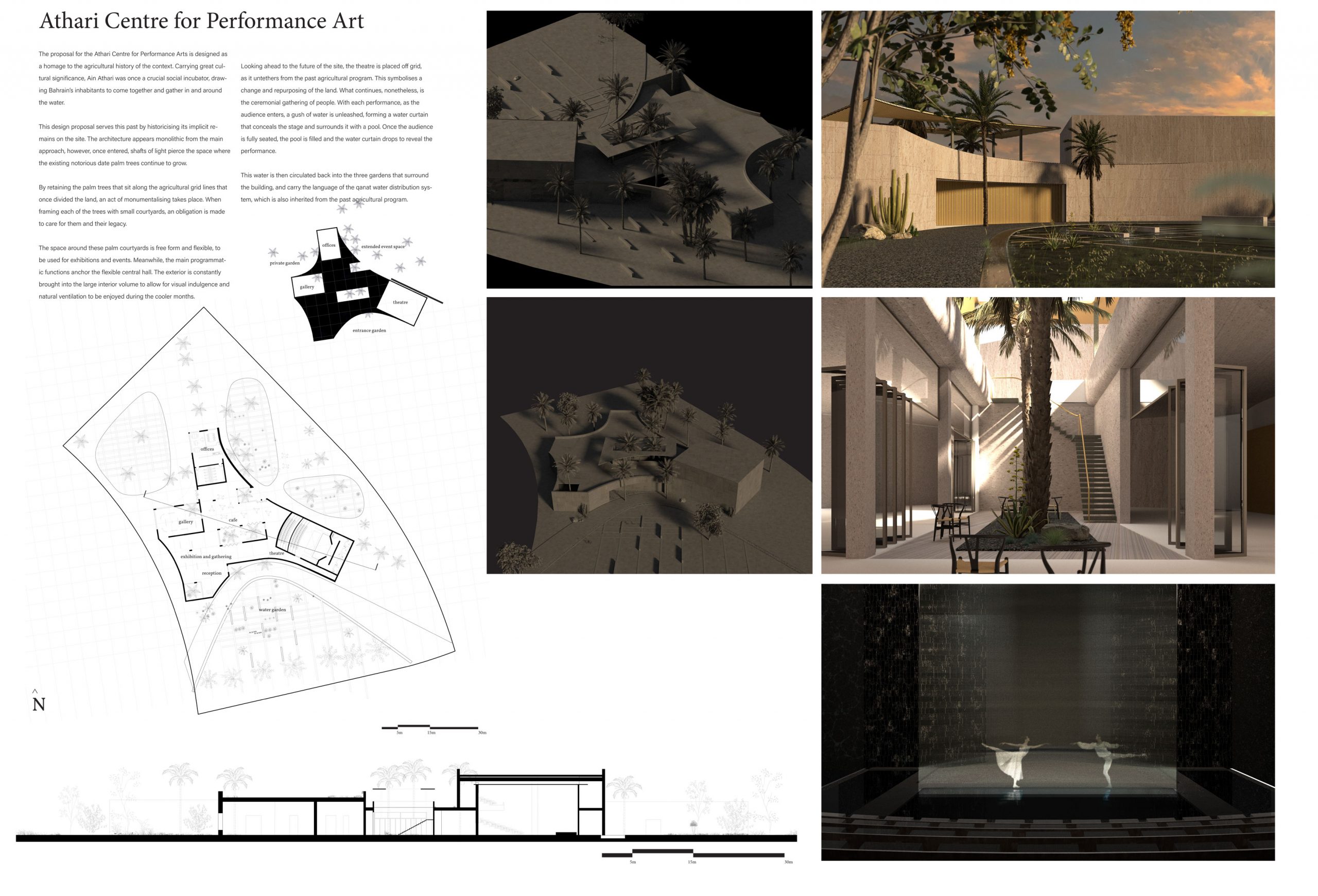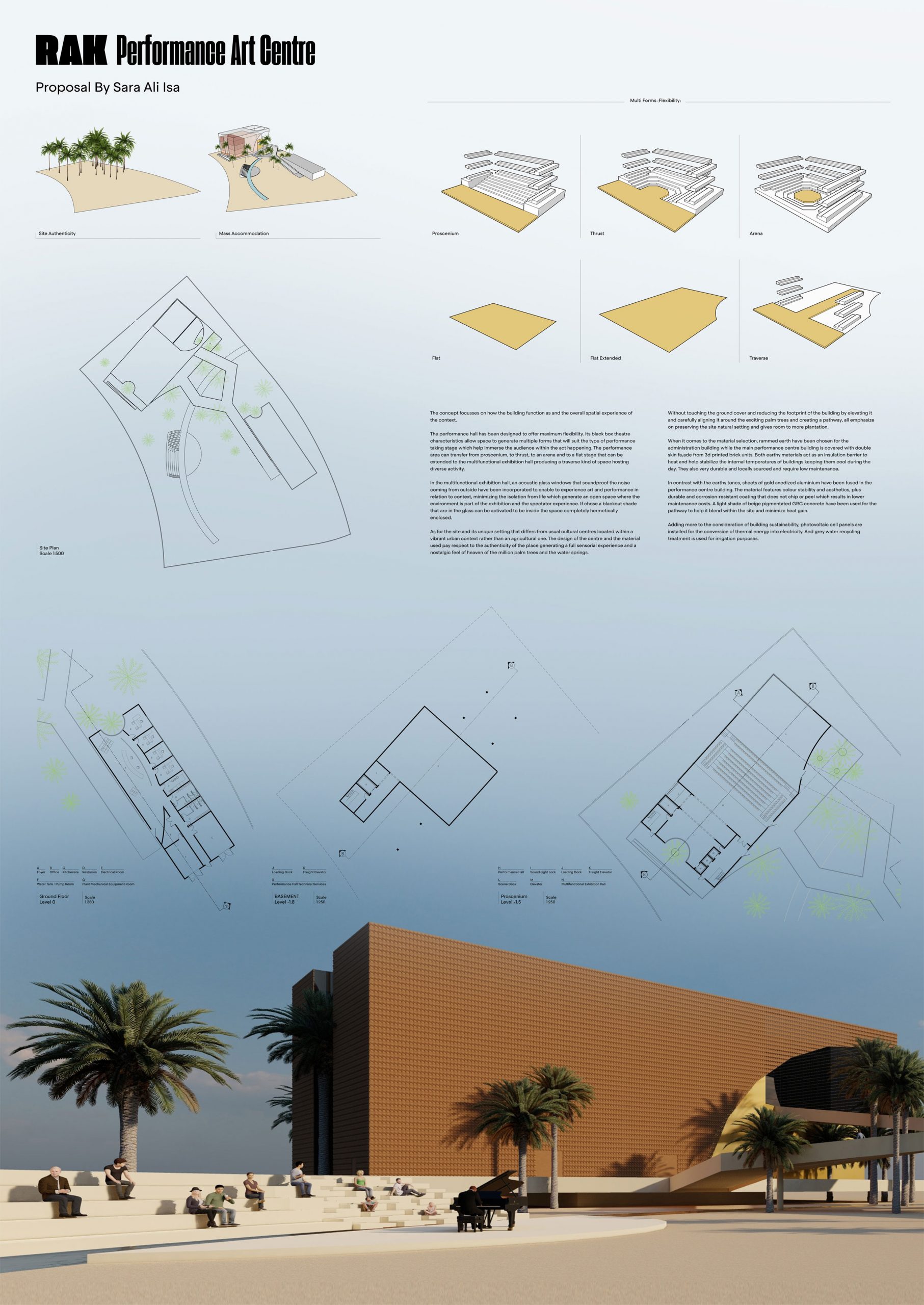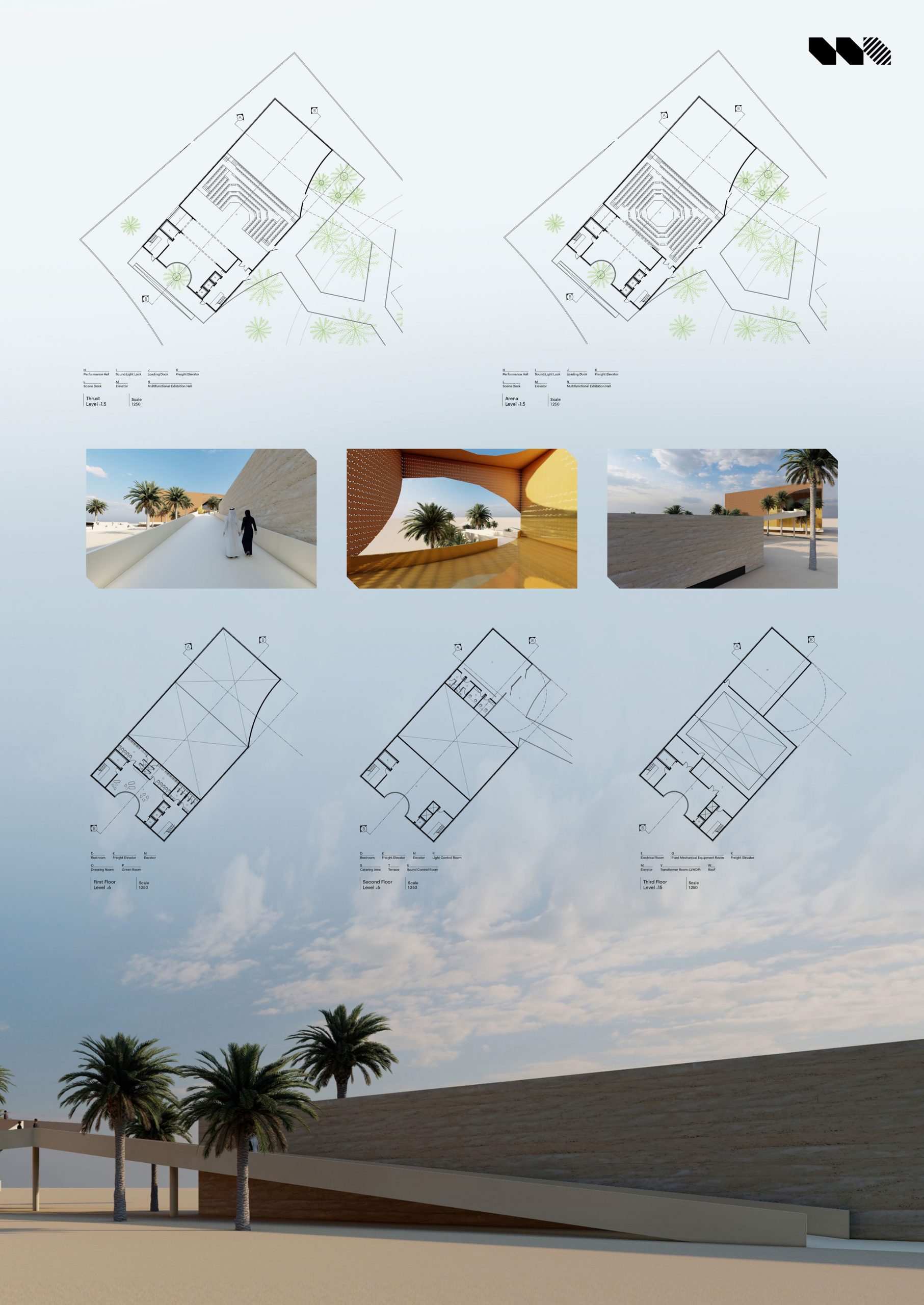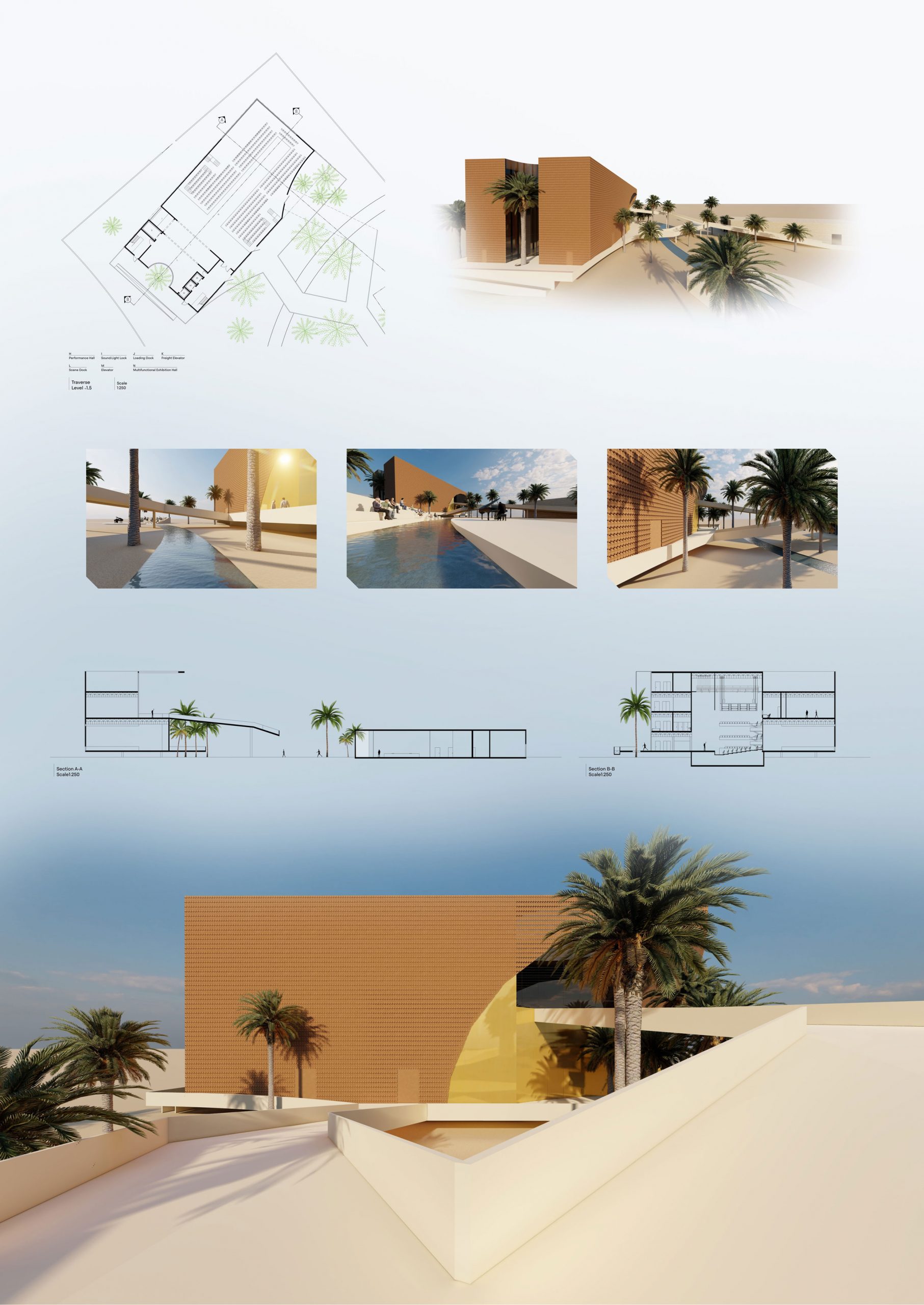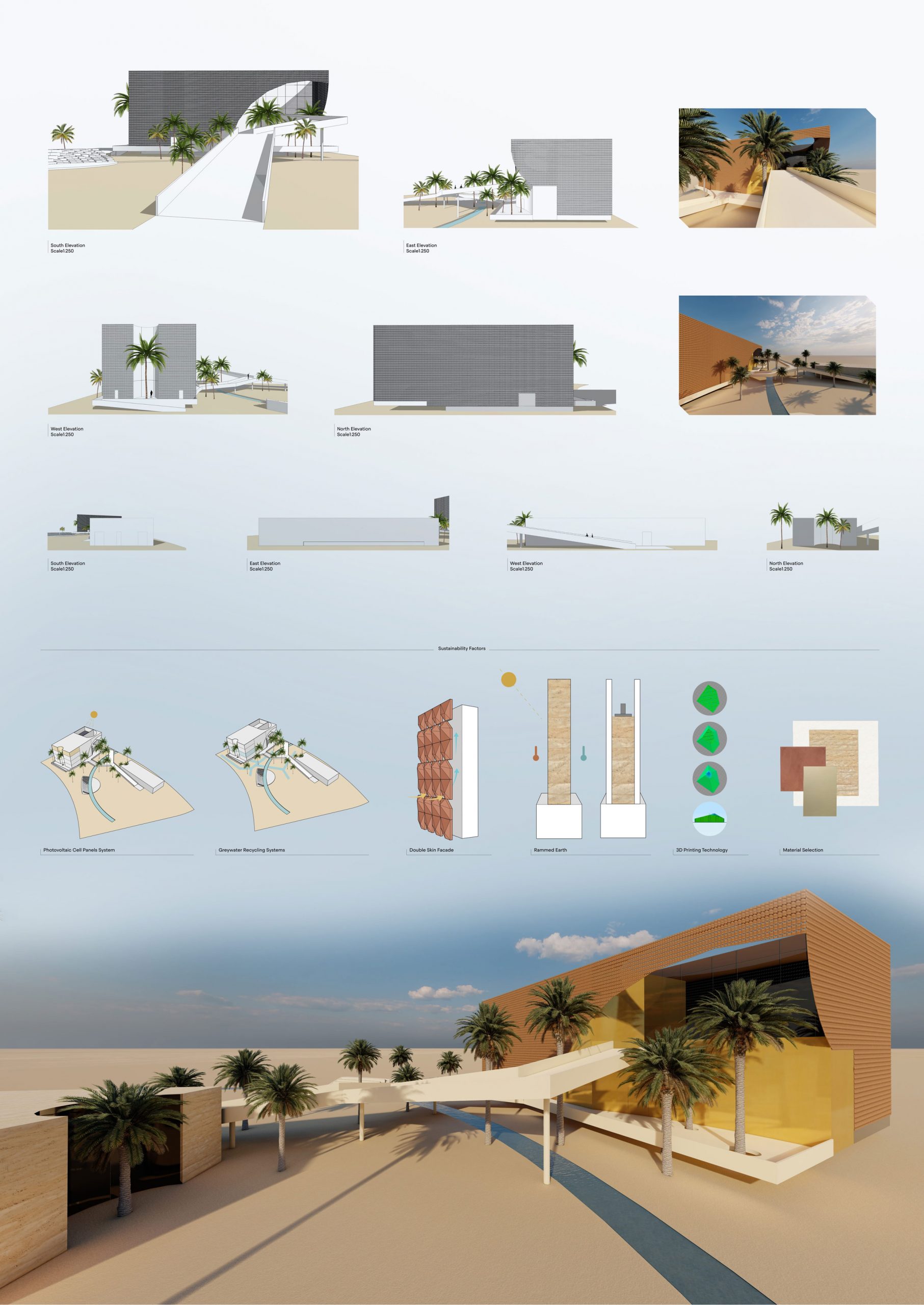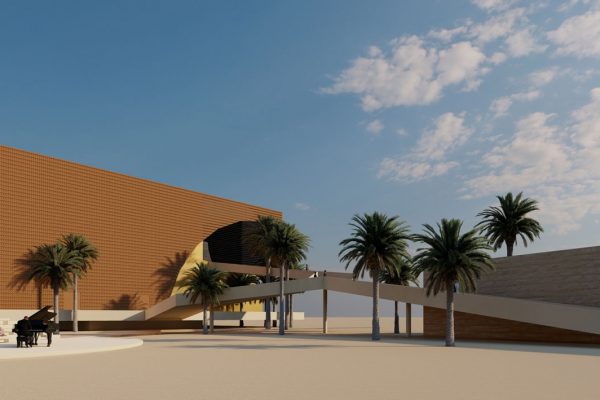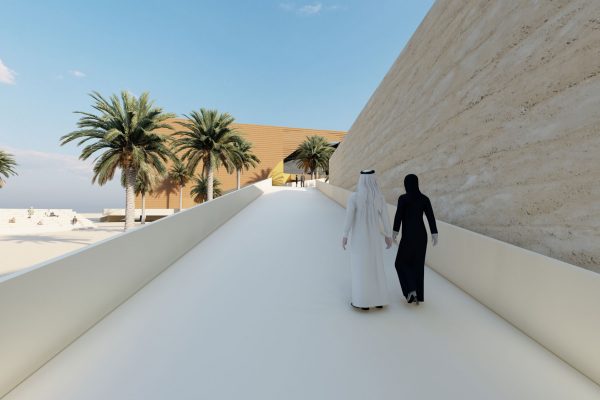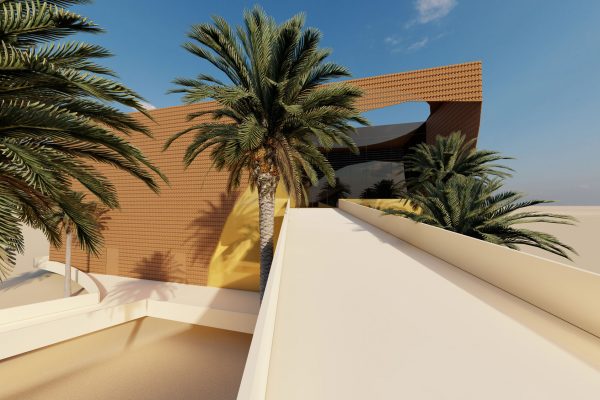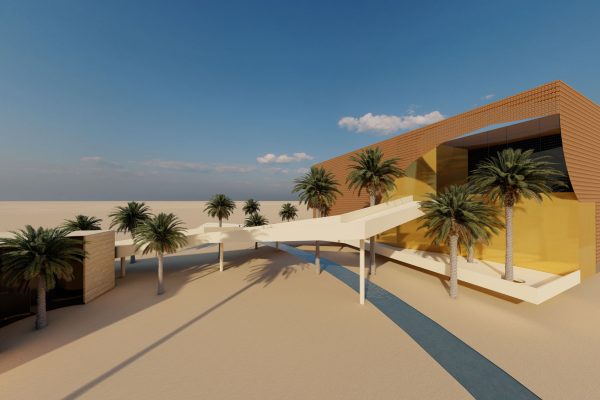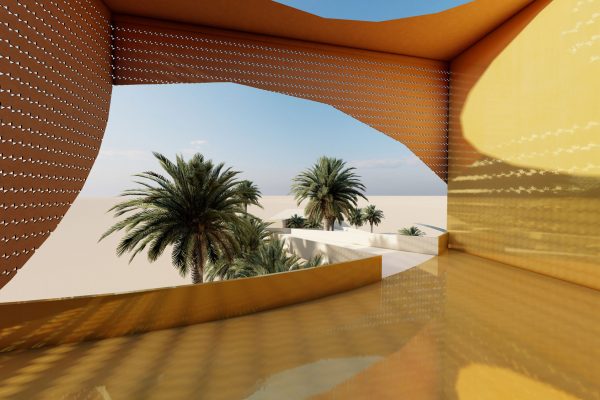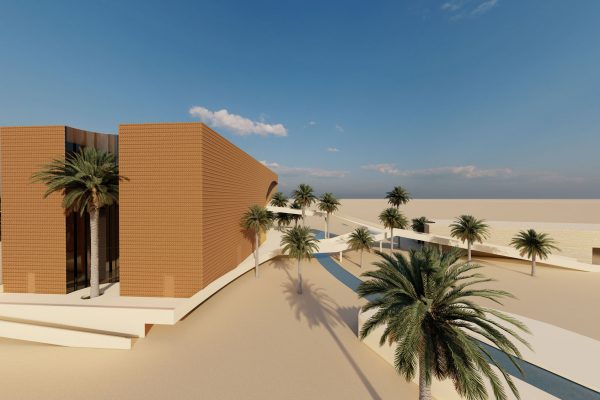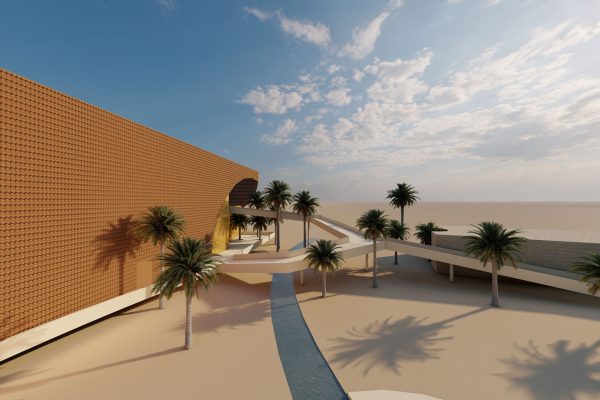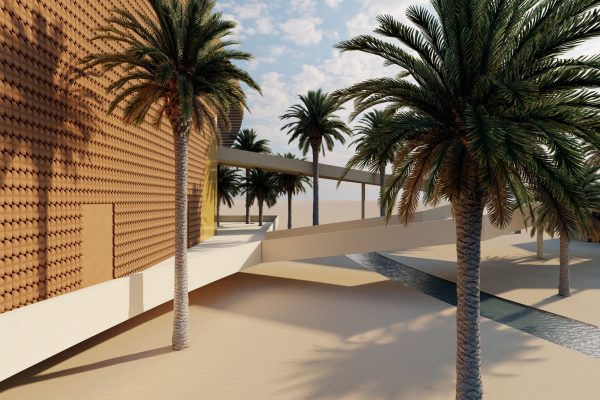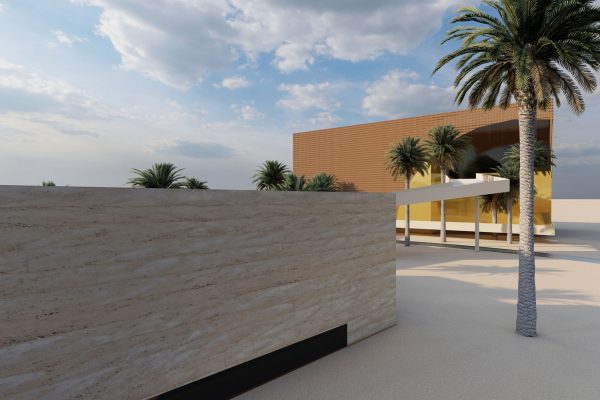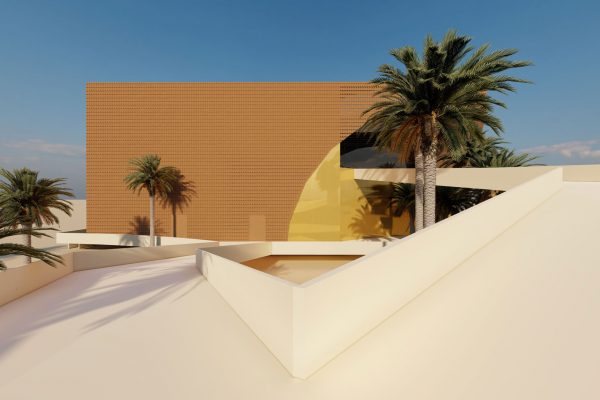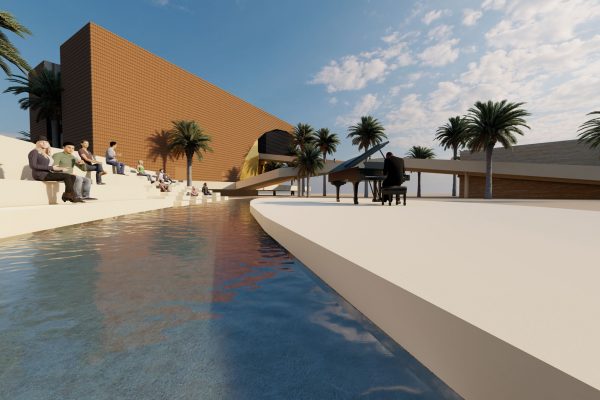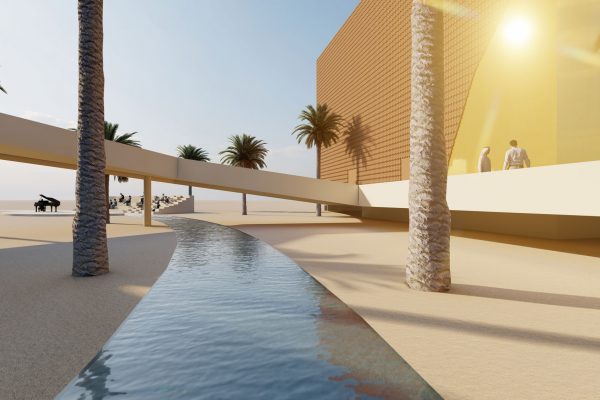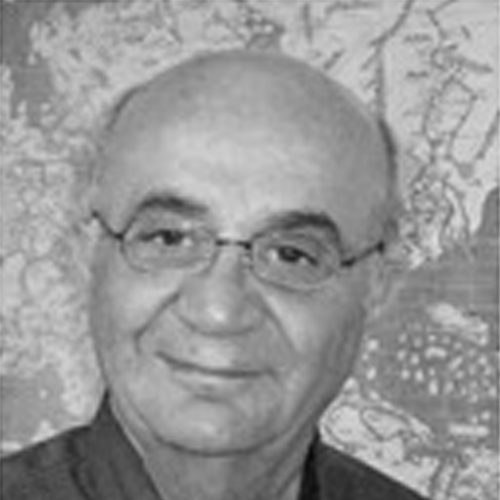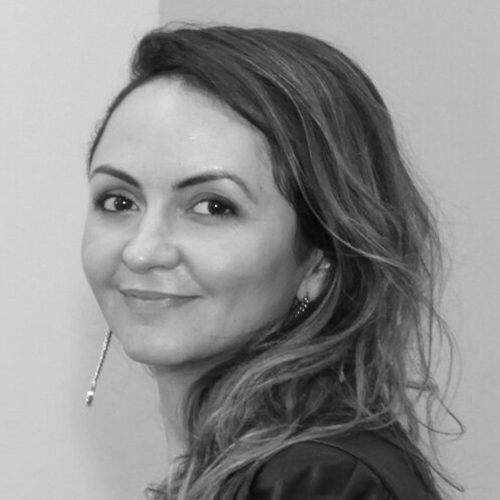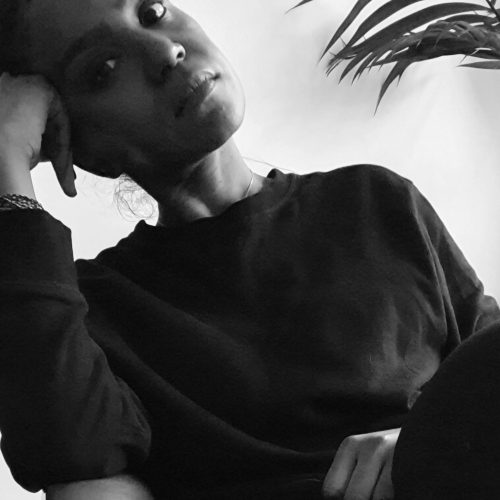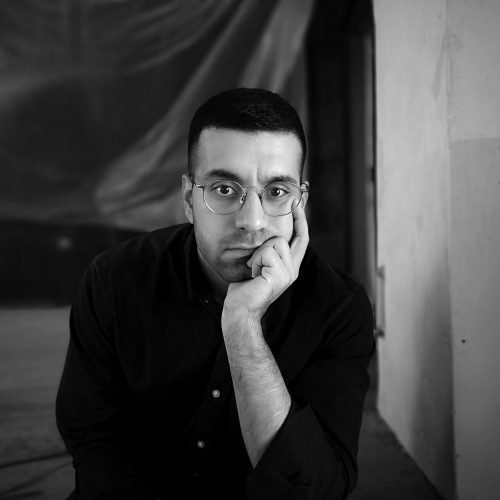RAK Architecture Prize
The RAK Art Foundation is proud to announce the winners of its inaugural Architecture Prize. The jury, consisting of Sheikh Rashid Al Khalifa, Yousif Daoud Al Sayegh, Dalia Al Mardi, Yasmin Sharabi and Ali Ismail Karimi, met last week to review the twenty entries to the competition. For the design of a Performing Arts Center in Adhari, the jury selected the following winners: Fatima Nickahdar in first place, Latifa and Al Anood Al Khayyat in second place, Sara Salman in third place, and Adnan Hasania and Mohammed Al Zeera as the two honorable mentions.
The jury commended the first place winner, Fatima Nickahdar, on the bold form of the proposal with its sloping massing and curvilinear circulation and gardens. The jury appreciated the design of the Center which allowed for outdoor performances to occur on the exterior, combining both stage and landscape onto a single roof plane. For second place, the jury appreciated the Khayyats’ proposal which featured a series of rectangular rooms in plan, connected by an interstitial series of gardens and exhibition/multi-use spaces, and the massing which separated the site into three distinct gardens. The third place proposal was chosen for its multi-form proscenium, and its vision of various performance spaces accommodated within a single building. The honorable mention projects were also acknowledged for their technical achievement, citing Hansia’s bold decision to place the theatre and outdoor spaces within a large water feature; and Al Zeera’s elegant choice of materials and finishes for the center.
The jury would like to thank all participants for their thoughtful proposals, and the RAK foundation invites members of the community to attend the award ceremony and participant exhibition in September. Date to be announced soon.
